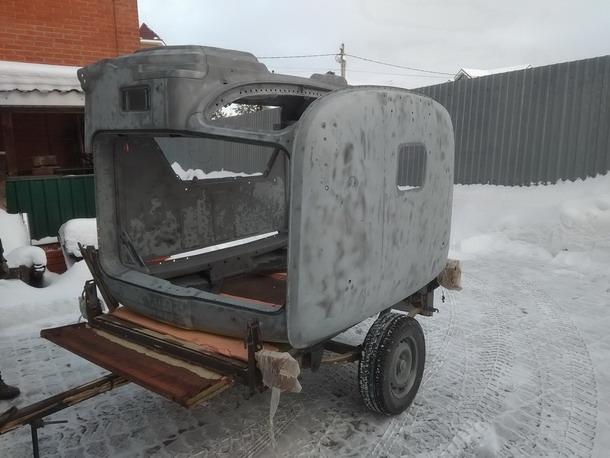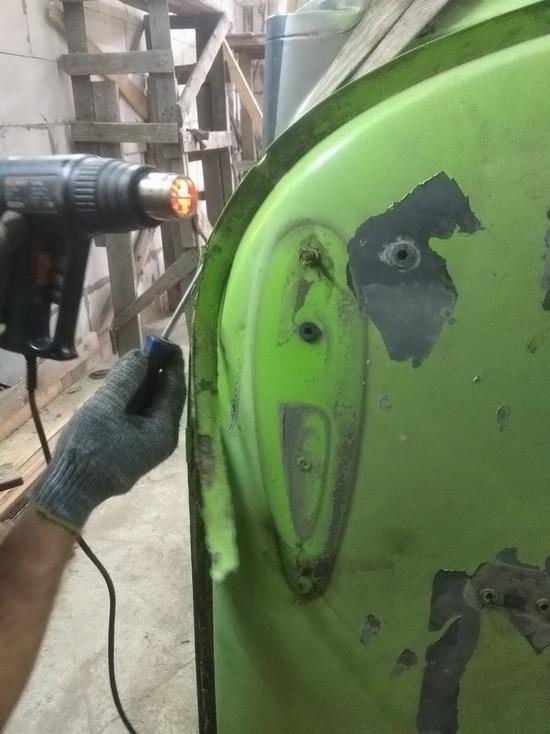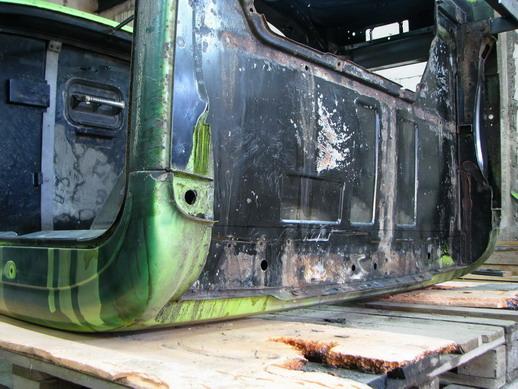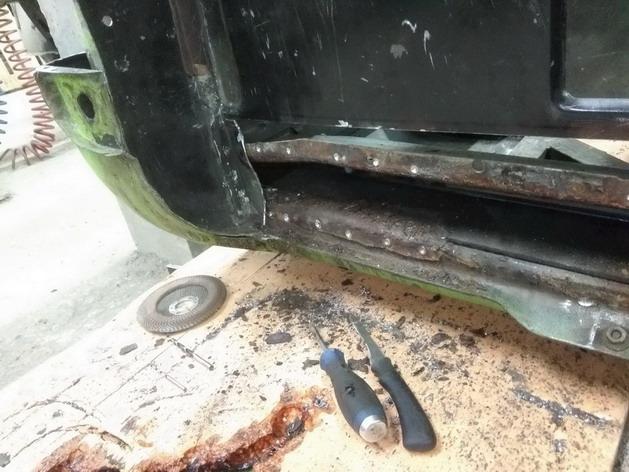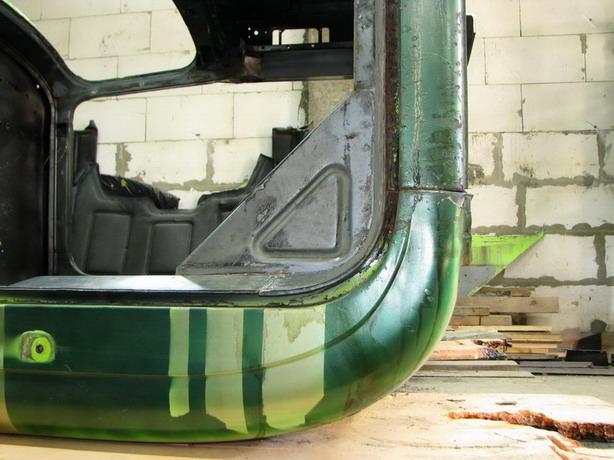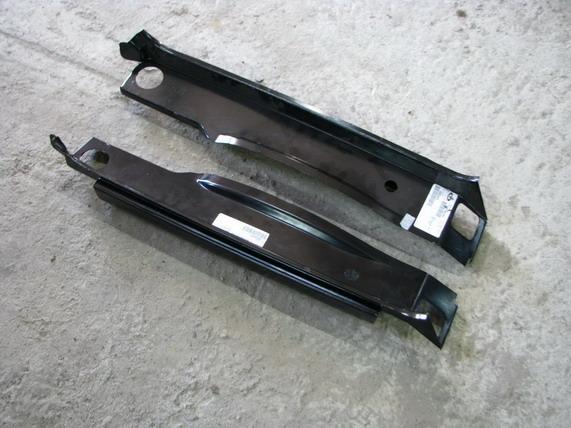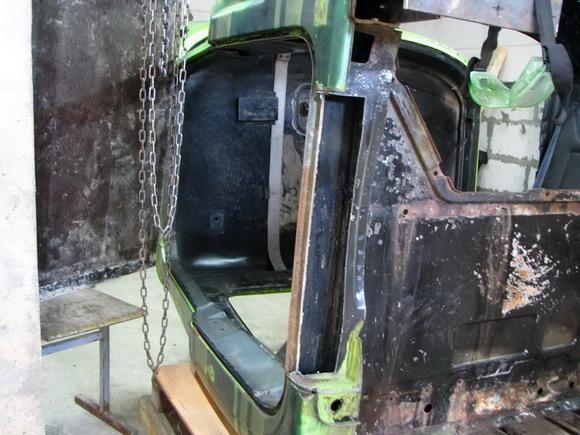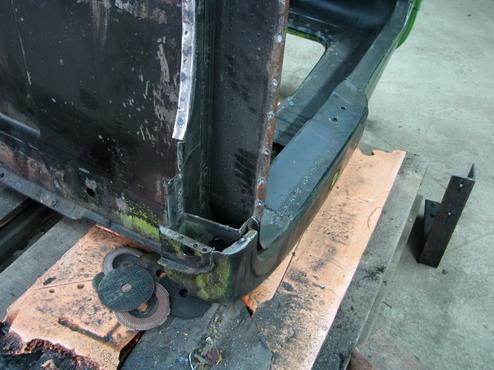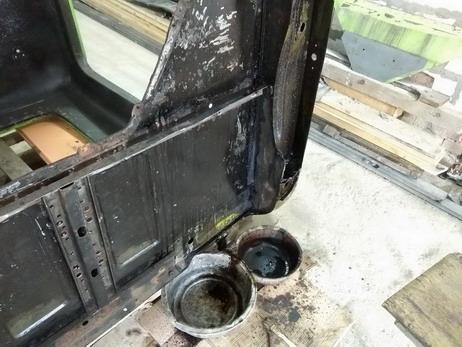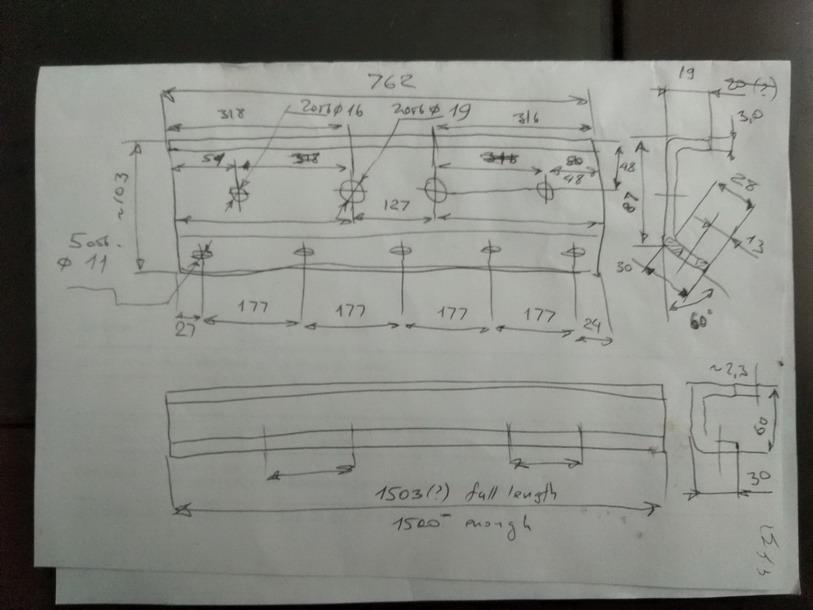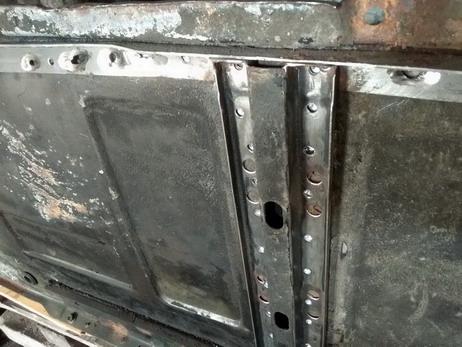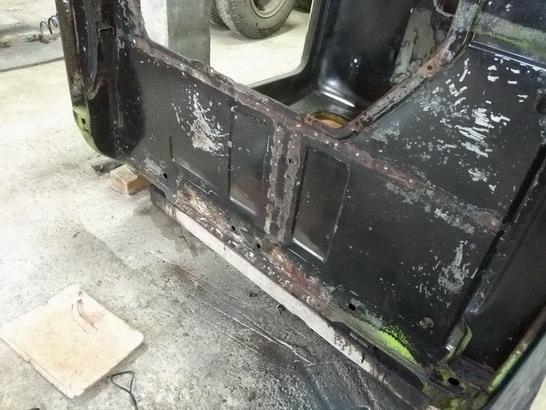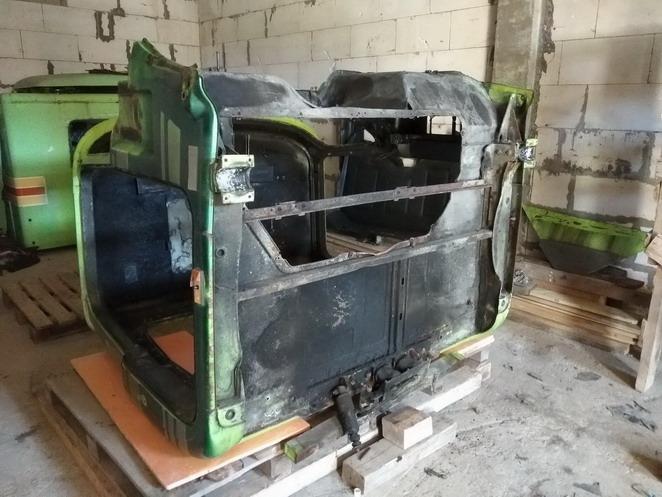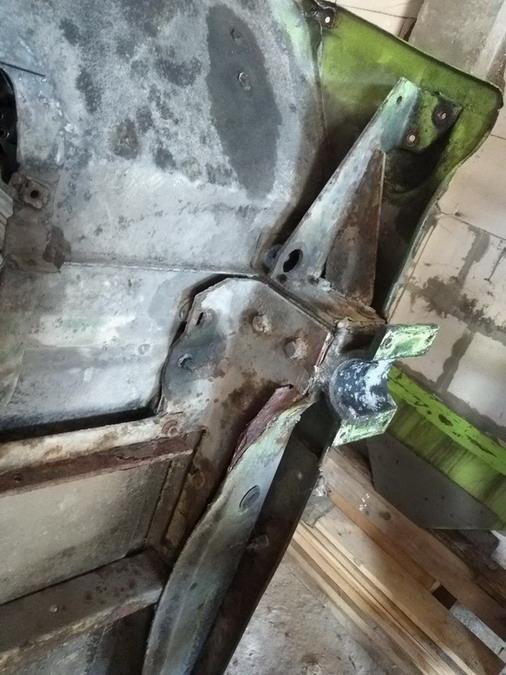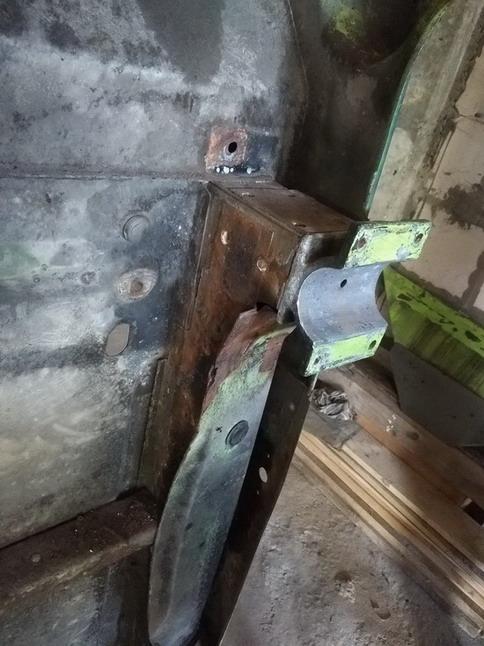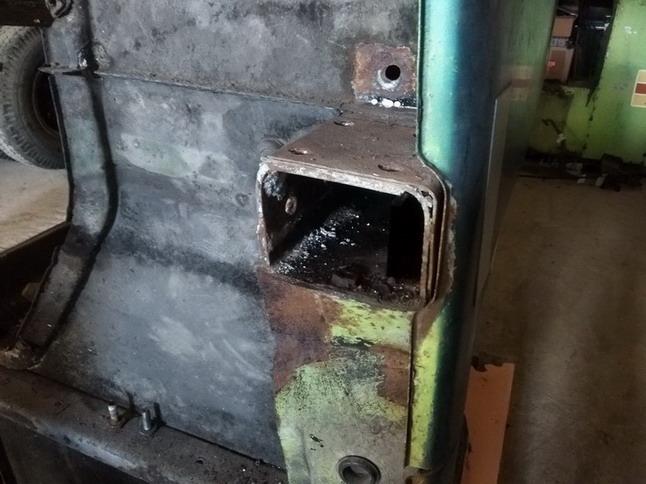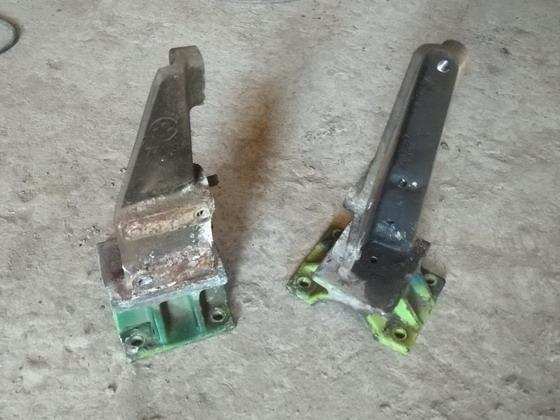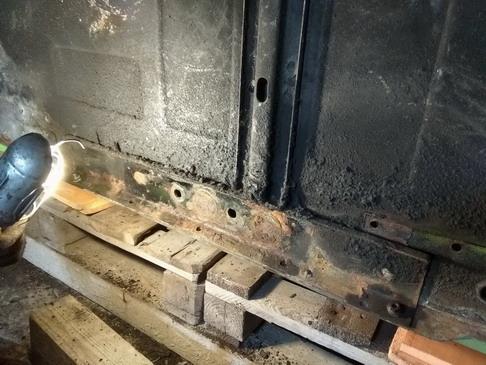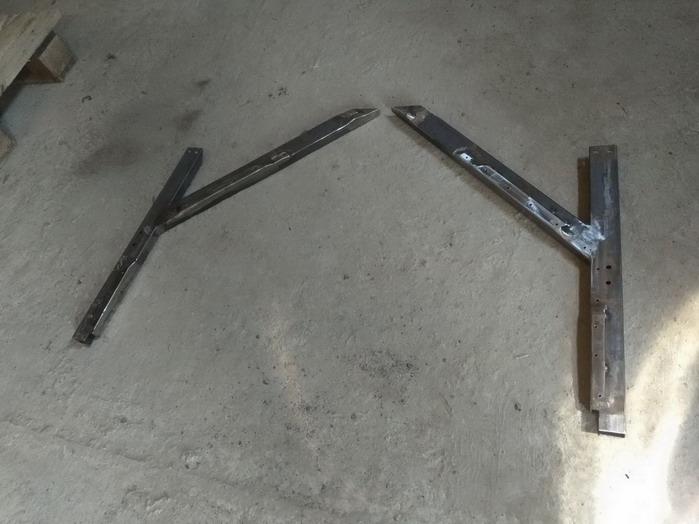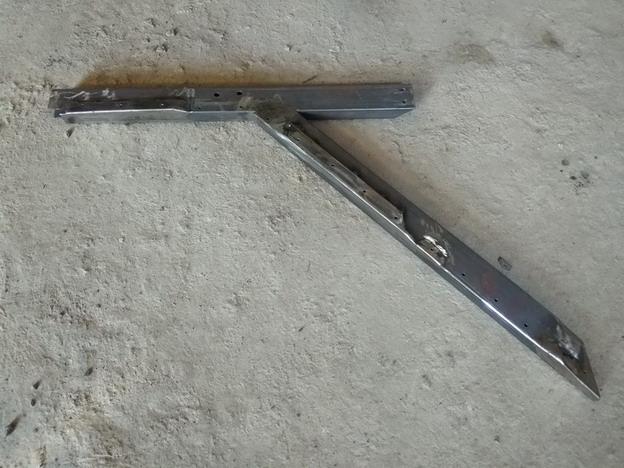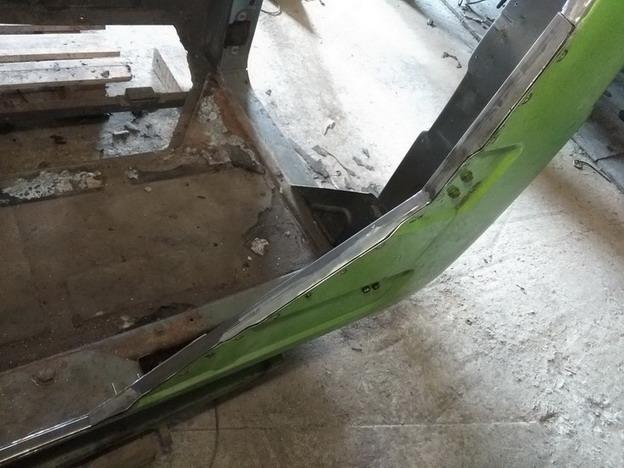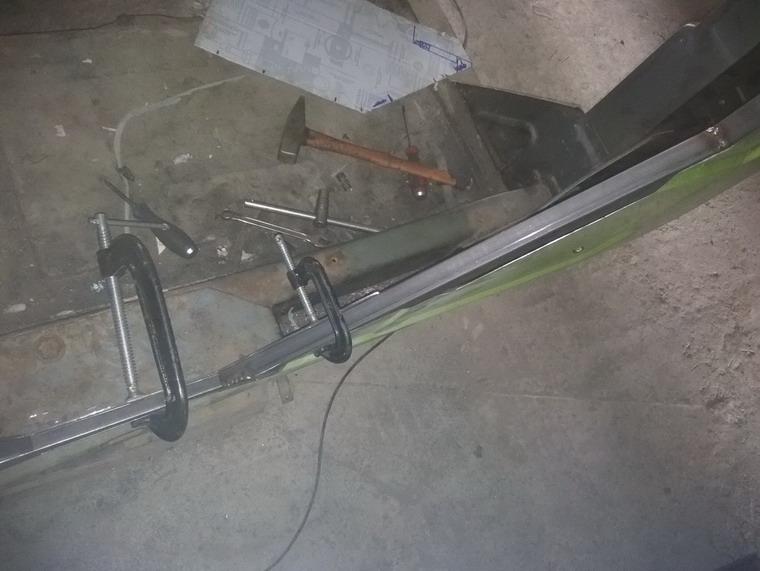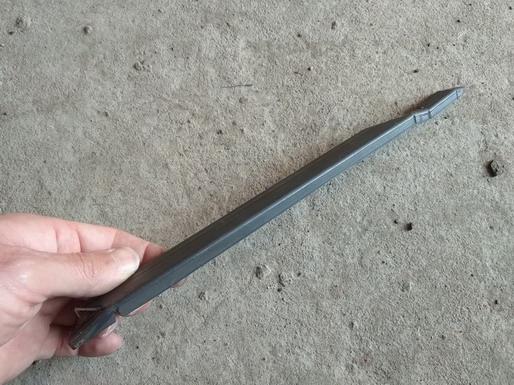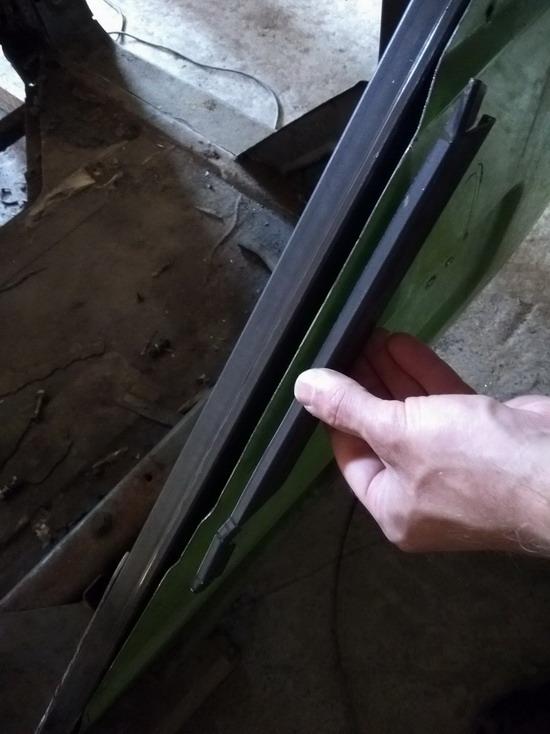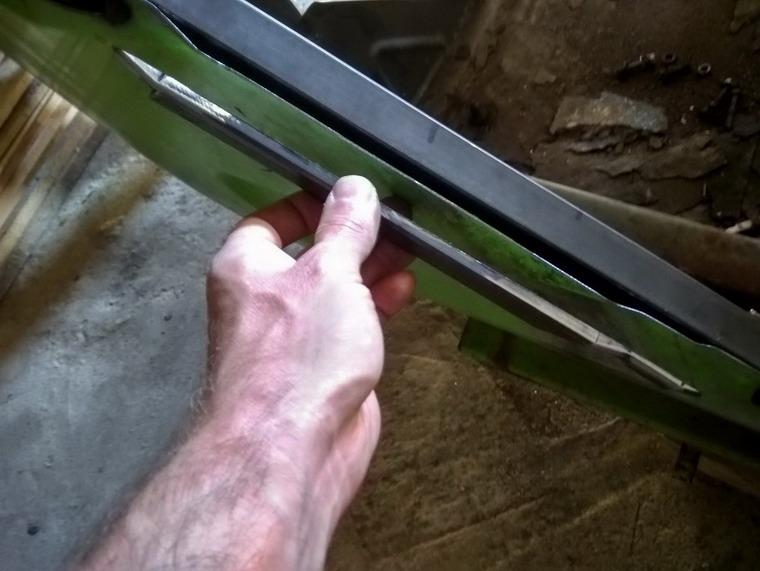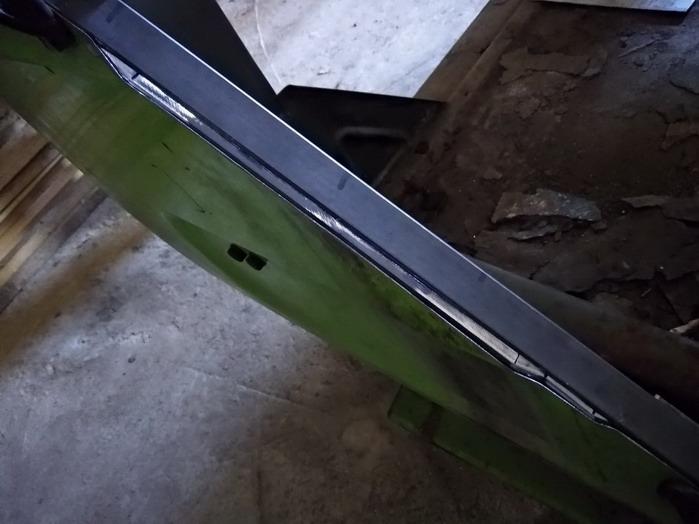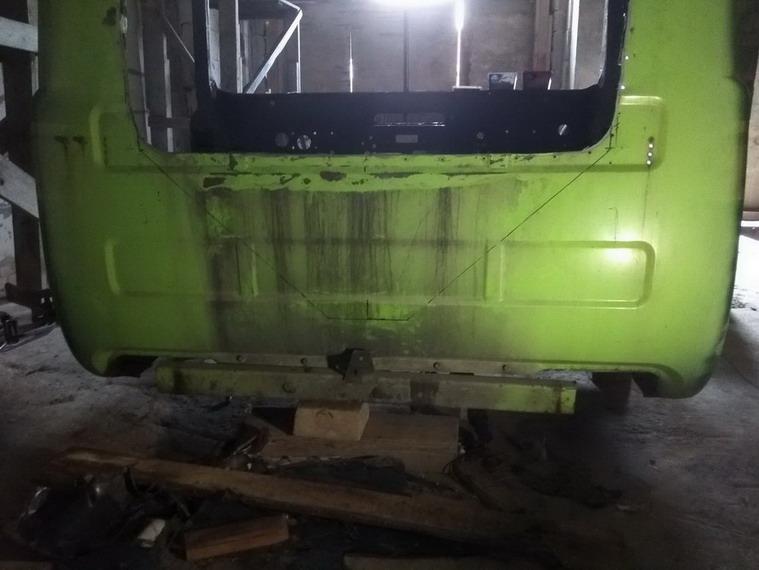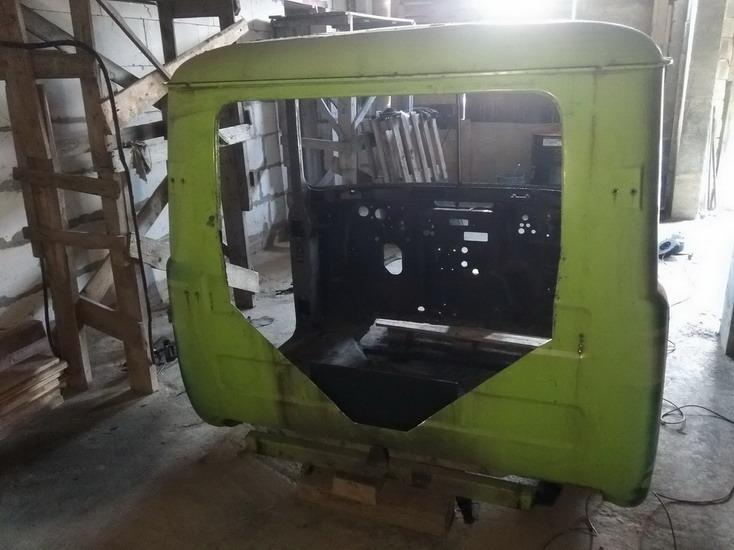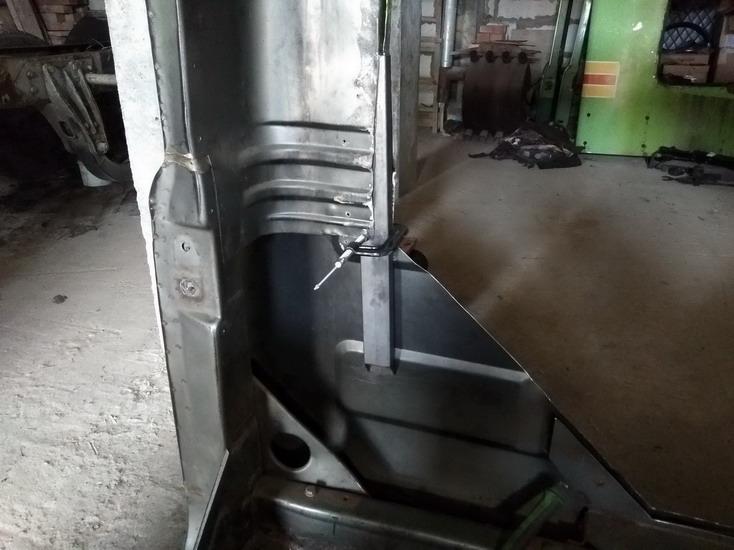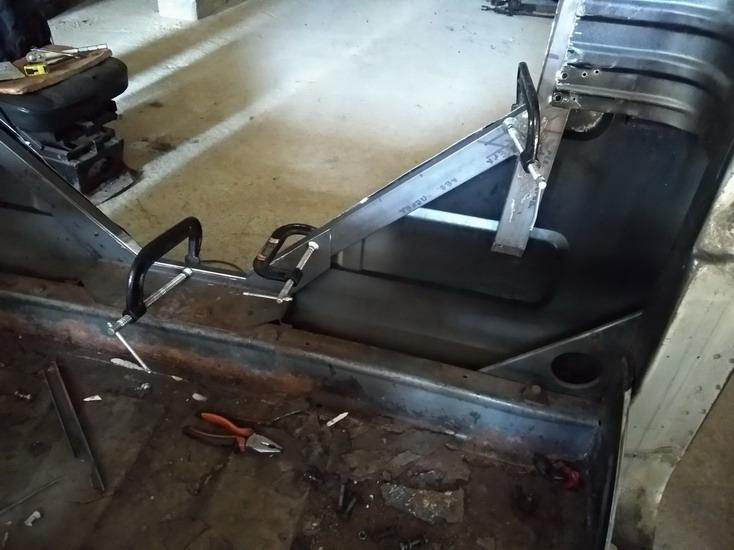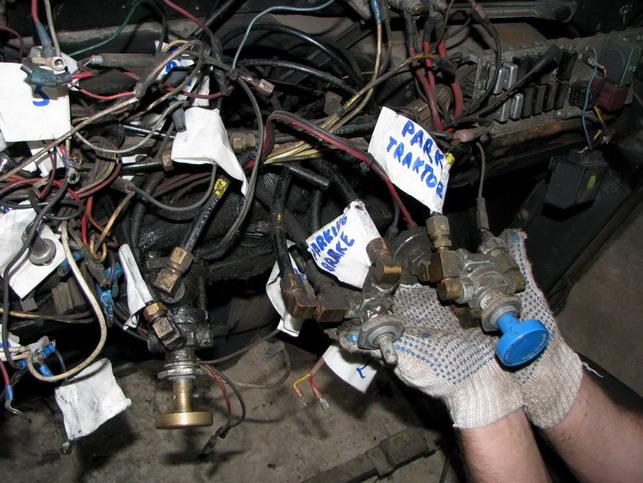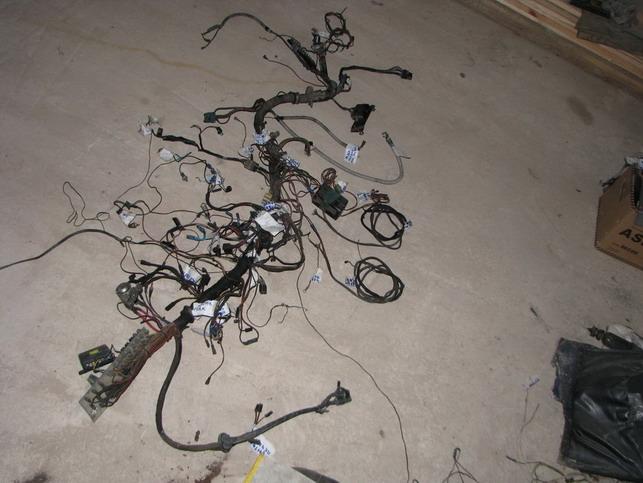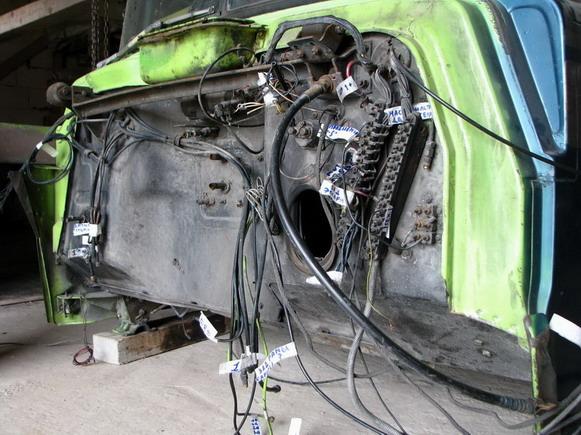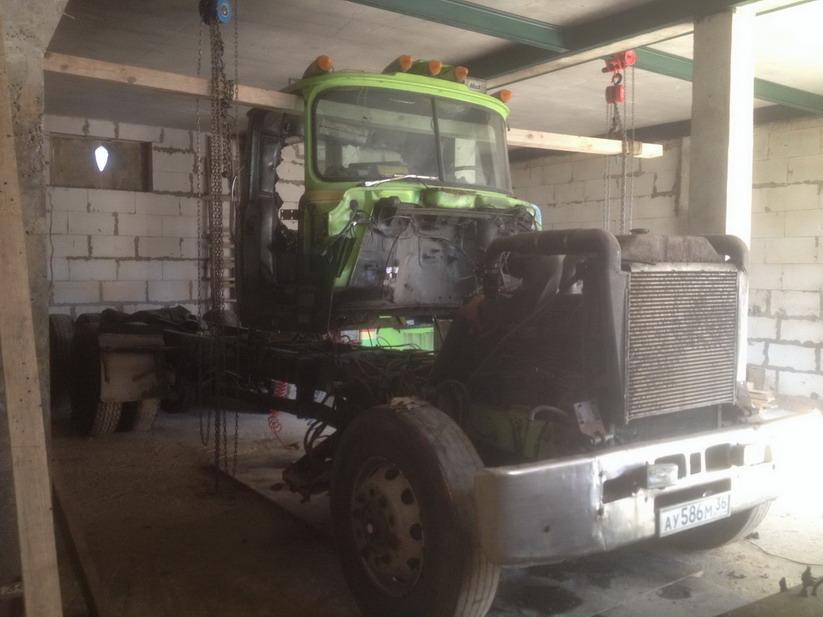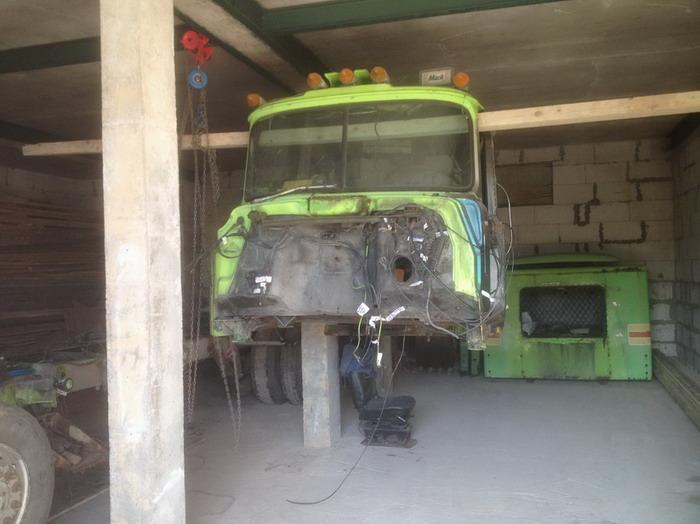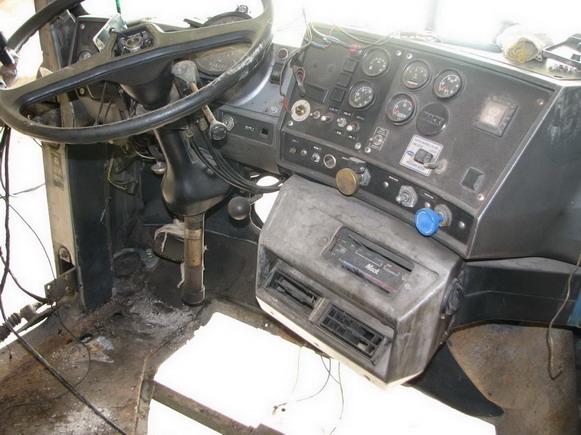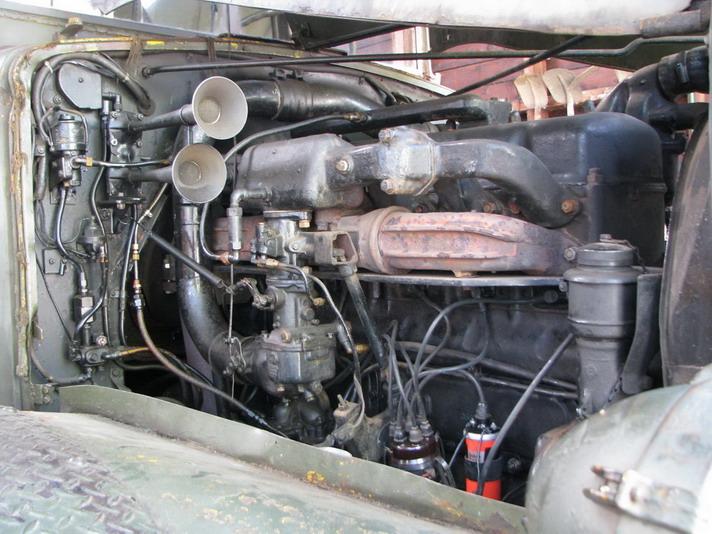-
Posts
7,929 -
Joined
-
Last visited
-
Days Won
78
Content Type
Profiles
Forums
Gallery
Events
Blogs
BMT Wiki
Collections
Store
Everything posted by Vladislav
-
That was one of my original ideas also. Good thing that all is good. Knock on wood
-
What a beauty! Asks for love by all her look.
-
Spinning thoughts is mostly always a good deal to do indeed. Of the truck the purchase idea is what my hell part of the mind tells. And the angel one advices to not get in rush and wait for a B with big alu grill which is rarer and more to my taste but would involve about the same amount of job activities and costs. In the particular case the only possible way to import that truck is taking it apart in NJ and load into a sea conteiner. I would pay nearly $1 for every pound of the shipping weight. Taking to account I have a complete bogie with camelback springs, Mack axles and 22,5 Dyton hubs and also short block of something like 237 engine (it was tagged as EM6-225) completed with crank, rods, pistons and heads it seems I would easily get rid of that Cummins engine in the B as long as the rears and split the weight down to 2-3 ton. Would be $5-6K to import it anyway and a need to transport to NJ and spend there a week or 2 to convert it into a pile of parts. The cost of the truck doesn't seem very friendly also since it's not road ready to be driven to NJ, plenty of rust and the rears are really slow as I could figure from the content the seller posted on here in the past. He noted good tyres but you never know how such are really good until check out in person. On the brighter side I could purchase a B-model and that would be the only B in Russia. Again, in a case if no one else more crazy than me and with a thicker wallet would import a complete or restored truck during the time I would tinker with one more pile of scrap metal
-
In a memory of Tilted Kilt Good job I even feel it's time for me to pack my bags and fly to Florida. Oh, no, probably it's too late...
-
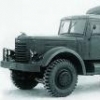
R-model cab resto report
Vladislav replied to Vladislav's topic in Exterior, Cab, Accessories and Detailing
All that surgary took 3 or 4 months looking the calendar so the weather got cold. We loaded the cab on a small trailer, waited for a good freezy day and sandblasted it all over including the insides of rockers and rear cross channel. The cab still layed on its back that time. I could lift it up a bit and put a wooden plank for support so the rear wall was partly blasted too. But actually it was mostly covered with paint so seemed possible to work out later with sandpaper. After the sand shower I put the cab in a warm shop for further actions. To be continued in a day or two. -

R-model cab resto report
Vladislav replied to Vladislav's topic in Exterior, Cab, Accessories and Detailing
Had to remove the sealer from the roof drip rail since it showed cracking and I planned to sandblast everything to be sure of no rust anywhere. Quite hard material being 32 years old but got soft after applying heat. -

R-model cab resto report
Vladislav replied to Vladislav's topic in Exterior, Cab, Accessories and Detailing
The last rusty neck of the woods over the cab floor was rearmost seam where floor sheet was attached to the rear crosschannel. In fact that channel was inside the cab and you could see it behind the seats. Stamped part you could see is its top. From the bottom it's covered with rear end of the floor sheet where they're spot welded together making a closed tube. My idea was cutting off a strip off the floor sheet and drill the spots to open the channel at the bottom. After that was done and I saw rust in the sandwich I figured the time was not wasted. -

R-model cab resto report
Vladislav replied to Vladislav's topic in Exterior, Cab, Accessories and Detailing
Next point was rocker panels. They were not really bad but showed some rust where were sandwiched to the sills. Also someone in the past installed lights in them so drilled holes which I preferred to get rid of. By chance I could purchase a pair of new rocker assemblies so resolved to pull the trigger. In fact you can not remove rocker assemblies complete not bothering the sill panels. The latters were good enough so I looked for options. Figured I could keep the rearmost portion in place making a cross cut. And than later fabricating connecting parts to unify them with new rockers. Getting a bit further I can tell the plan was to make the most connections with bolts and nuts to avoid welding. Worth to admitt the front ends of old rockers also gave us sufficient headaches to get free from the cab but with some cutting/drilling and standard lot of cuss words that hill was climbed up. -

R-model cab resto report
Vladislav replied to Vladislav's topic in Exterior, Cab, Accessories and Detailing
The main target of the work was to remove all rust spots including potentional ones. Such areas took place between the floor sheet and floor support reinforcements. I took measurements off those channels, made scatches and ordered new ones to fabricate in a steel shop. Got parts in a week or so and after that my guy drilled off all weld spots (and drilled some through) and the old parts were removed. Good thing the rust protection coating used at the factory was asphalf (bitumen?) based. So half a jerrican of gas made a job removing that stuff away. -

R-model cab resto report
Vladislav replied to Vladislav's topic in Exterior, Cab, Accessories and Detailing
Next step was putting the cab on its back. We removed front reinforcement parts, front cab mount brackets and the airbag assembly. Steel bolts got almost stuck in aluminium mounting brackets so regardless extensive penetrating with WD40 and hitting by hammer we got a dozen of them broken down. Could remove the brackets from the cab pockets. Than later having them on a bench I welded nuts to the ends of broken bolts and after multiple attempts combined with heating, hitting and penetration removed all the restovers. -

R-model cab resto report
Vladislav replied to Vladislav's topic in Exterior, Cab, Accessories and Detailing
Had to make reinforcement straps to support the roof which lost its original strength. Used steel stripe 6mm (1/4") thick and 50mm (2") wide. Bent in shape to follow the roof curve but also to stress it upwards. Made two such straps. -

Salt Lake City W-71
Vladislav replied to CaptainCrutch's topic in Antique and Classic Mack Trucks General Discussion
No that engine was not military only. It was originally offered by Mack as a part of the newly designed Thermodyne family in November of 1938. So it was before the beginning of WW2. I'm not ready to share facts right at the moment but suppose they were also installed in commercial trucks after the war until newer generation of the same basic design came into produdtion. Worth to note the military version had some specialialities such as modified oil pan and pump to clear up the front drive axle since those were used in 6x6 trucks. Also they didn't have dual ignition being not a firetruck engine. But the 2nd spot in the block for the additional distributer drilling and the 2nd geared area on the engine shaft were all there. -

R-model cab resto report
Vladislav replied to Vladislav's topic in Exterior, Cab, Accessories and Detailing
After that I invited my friend who is a body guy to get the roof closer to its normal shape. Seemed like during the years of service many folks made dancings on that roof so it became more as a pan than a dome. The pics are of the before and after. And also one from the net taken at some time long back at some truck stop by some driver who asked the Mack driver for permission to pose on the hood... In fact that was not the truck I took the cab off but the second one and illustrates really well the actual grade of respect people payed to the rigs they worked for living. To be continued -

R-model cab resto report
Vladislav replied to Vladislav's topic in Exterior, Cab, Accessories and Detailing
Having all the parts in place I drilled holes for pull rivets from the outside to attach the wall sheet to. -

R-model cab resto report
Vladislav replied to Vladislav's topic in Exterior, Cab, Accessories and Detailing
If you look from the opening there was a gap occured between the steel sheet and reinforcement channels where the wall didn't have depressions. The task was to have a tight fit so we had to fabricate spicers. My helper cut pieces off the same square channel the way I showed him and than tinkered with the final shape for a couple of hours following my directions. Those metal pieces looked funny but fit well. It took him a couple more hours to duplicate the part for the other side. After that I welded both spicers in place. Some grinding smoothed the look and the result showed up. Than we had to make something similar to the side areas since there were gaps either. But those spots were much easier having no angle crossing of the surfaces. -

R-model cab resto report
Vladislav replied to Vladislav's topic in Exterior, Cab, Accessories and Detailing
The first thing I wanted to do was to correct the sleeper entrance opening. When I made new sleeper it was done a bit longer than the original one to be able to walk into. Originally it was a crawl through style so the cab had only the rear glass removed and cut out for 100-150 mm lower the window lower edge. A long while back Dan Bruno had scatches of the sleeper of the Rubber Duck RL700 on the fan-site page he ran at those times. I took general sizes of the opening from there and used them making my sleeper. So now just needed to cut the cab the same way. Cutting itself was sure not a problem. The difficulty was to organize some thicker edge to the cab wall to be able to fit the entrance boot in the future. Also I wanted to reinforce the wall after I cut alot of it away. Measuring the distance between the inner interior lining and the metal it seemed suitable to use rectangular steel pipe. Or a channel. In Russian we call such beam as a pipe but seems American terminology is different. Nevermind. I used pieces of the channel to put vertically and attached by a pair of machine screws at each end. Made them having the heads outside in the rear wall depressions so they wouldn't rub the sleeper wall. Also they're difficult to see on the truck when the sleeper will be in place. Than I cut two pieces for diagonal portions, fit them in place and welded to the stakes. -

R-model cab resto report
Vladislav replied to Vladislav's topic in Exterior, Cab, Accessories and Detailing
-

R-model cab resto report
Vladislav replied to Vladislav's topic in Exterior, Cab, Accessories and Detailing
I ordered my helper guy to remove everything from the inside and off the firewall. Said him to mark as much as he could or what seemed notable. I went off for a couple of days and when back found a funny fact. He needed to put marks on the paper masking tape he glued up but he didn't know what was what in the most cases. That way he marked many spots with what was written on the shields and gauges. So I could see the badges written in English and that was done by a person who could not say or wright any word in English at all! Sure no problem, worked out fine. -
It happened that the job is already done at the moment. Sure turns out more interesting when you share progress step by step but in many cases it's difficult since you're full with current tasks and also unexpected deals but need to cut some time for posting. So this is such case. Anyway I would like to show up the job since some points of it seem worth to be shared and I hope people would like looking it either. Ok, some while back I could put my hands on a spare cab which was installed on the spare truck. Good thing I bought two similar trucks so I redo parts from one and have the second one still running. Worth to note I'm really glad using this way of restoration. After taking off the hood, sleeper, tanks and detaching all air lines and wires we put a wooden bolster into the door openings and haged it by two overhead hoists. The hoists were orginized to move left and right so we could take the cab to the side moving both winches at the time.
-
Bringing the truck to the bodyshop seems as the only way to go. Or... You could buy another B-model or the front half of it and bring it down there instead A story of that kind - when I asked an upholstery guy to make me two new door panels for my R-model I brang the old pair of those as a sample. And after I got comment of he better needed a vehicle to make the parts into the correct shape (he already made them larger) I showed up with not the truck's cab but the door
-

Salt Lake City W-71
Vladislav replied to CaptainCrutch's topic in Antique and Classic Mack Trucks General Discussion
-

1981 Mack R-766 Tractor
Vladislav replied to j hancock's topic in Antique and Classic Mack Trucks General Discussion
R700 had different front spring mounting brackets. I would expect difference in that matter. The cab seats higher off the fuel tank top line than a R600 too. -

Aussie Mack Valueliner
Vladislav replied to harrybarbon's topic in Antique and Classic Mack Trucks General Discussion
These are Down Under coasters -
Looking the pics I would say the front sheet matel is not very good. The cab is probably of the same sort of condition. Also a big question is the frame rails since no pics you could determine how they're good or bad. The current bid is $3300 and the reserve not met.
-

Salt Lake City W-71
Vladislav replied to CaptainCrutch's topic in Antique and Classic Mack Trucks General Discussion
Also an interesting fact is the diff ratio. Mike, what the thunder did force you to set up a new account?
BigMackTrucks.com
BigMackTrucks.com is a support forum for antique, classic and modern Mack Trucks! The forum is owned and maintained by Watt's Truck Center, Inc. an independent, full service Mack dealer. The forums are not affiliated with Mack Trucks, Inc.
Our Vendors and Advertisers
Thank you for your support!






